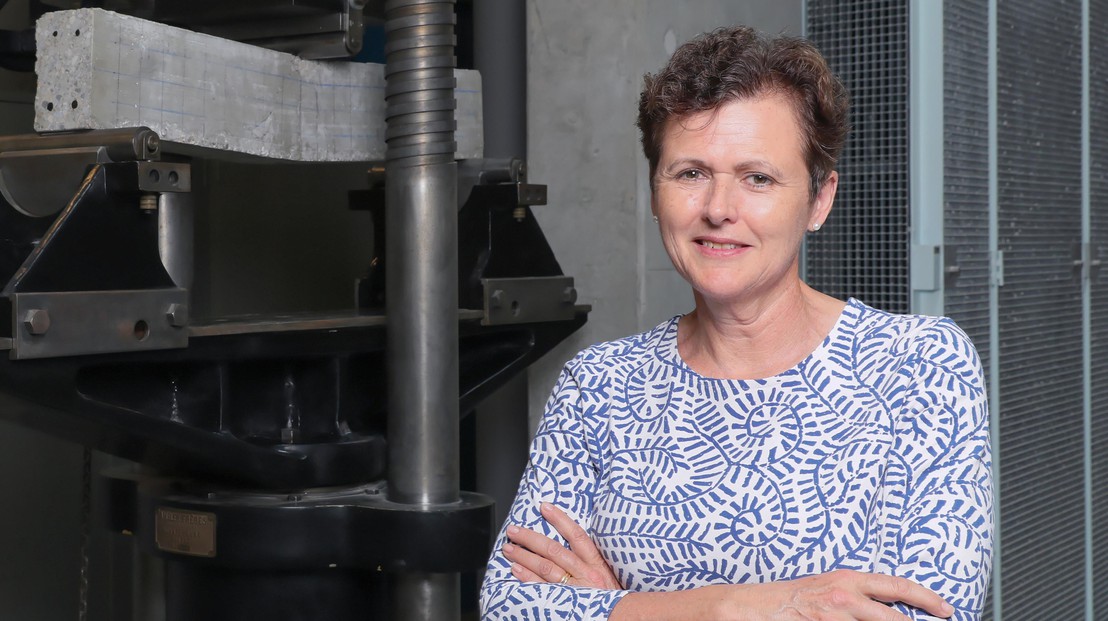
Friday, 17 August has marked the 100th anniversary of the Laboratory of Construction Materials LMC. This is one of EPFL’s oldest labs and specializes in concrete – a 4.2-billion-ton-per-year industry worldwide. Here is a look back at how this material has changed over the years.
It’s safe to say that the world as we know it would be quite different without concrete. Following its invention in the 19th century, modern concrete – or Portland cement – quickly found its place in the building industry. This novel material could be used to rapidly build roads, bridges, dams and many other types of civil engineering works. Nowadays, nearly 4.2 billion tons of concrete are produced every year around the world.
EPFL’s Laboratory of Construction Materials has been instrumental in the advancement of concrete technologies over the past century. Initially called the Building Materials Laboratory (see the history of the lab below), it was founded in 1918 by Henri Demierre and Professor Marius Lacombe. For its centenary celebration, the lab has offered guided tours, children’s workshops, videos and a retrospective exhibition. Karen Scrivener, the lab’s current director, is unequivocal:
“No other material can compete with concrete.”
What has changed in the study of concrete since 1918?
In the early days, the focus was on defining the properties of this burgeoning material and on responding to basic questions, like how much concrete is needed for a building, and what its mechanical properties are. The professors who have headed up the lab since then have each had their preferred research topics, and some of them quickly made a name for themselves internationally.
How has this material changed our lives?
We used to make buildings out of stone, but that was very expensive and time-consuming and offered little design freedom. Concrete starts out as a powder, which makes it very easy to transport and then fast and straightforward to use. It is also highly versatile – EPFL’s Rolex Learning Center is a good example of what can be done architecturally with concrete.
What is your lab’s current focus?
These days our research centers on environmental issues. Concrete is a relatively environmentally friendly material to produce but the manufacturing process nevertheless accounts for nearly 10% of human CO2 emissions owing to the huge – and growing – level of demand.
We study all of the fundamental phenomena that characterize concrete in order to produce green concrete and keep CO2 emissions down. The world needs answers to global warming now, not in 20 years.
Is there an alternative to concrete?
No other material offers so many possibilities. Concrete works best and has become the industry standard. And Switzerland – with the Swiss Federal Laboratories for Materials Science and Technology, ETH Zurich and EPFL – is among the leading countries in concrete research and can have an impact at the international level.
Our lab teams up with partners in Asia and Latin America, where demand is booming. Much research remains to be done in order to make concrete even better and more environmentally friendly than it is now.
History
– 1918 The Materials Testing Laboratory (Laboratoire d’essai des matériaux) is created
– 1927 The lab is split into two divisions, one for metals, the other for mineral-based materials
– 1954 Two different labs are created: the Building Materials Laboratory (Laboratoire des matériaux pierreux) and the Laboratory of Metals and Machines (Laboratoire des métaux et machines)
– 1980 Professor F. H. Wittmann changes the name of the Building Materials Laboratory to the Laboratory of Construction Materials.
Author: Laure-Anne Pessina Source: Mediacom